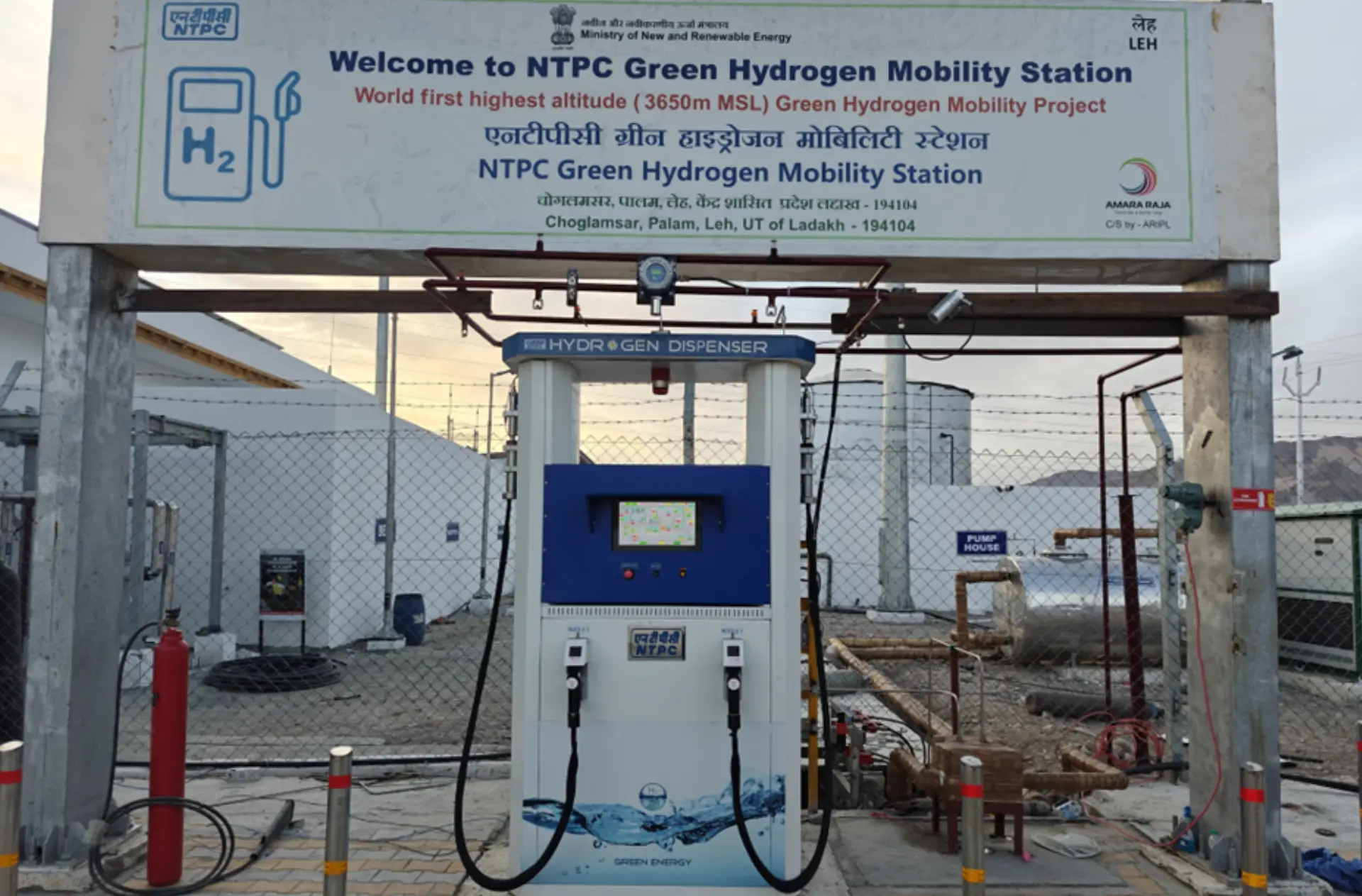Prime Minister Narendra Modi's vision of a green future for India through net zero emission has started to become a reality with NTPC delivering hydrogen buses on public roads in India.
PM Narendra Modi inaugurated the prestigious green hydrogen mobility project in Leh/Ladakh which is now the highest altitude hydrogen refuelling station in the world at 3306 metres from sea level.
This prestigious project, led by NTPC Limited and executed by Amararaja Infra Limited and in association with Humble Hydrogen Pvt Ltd (HHPL), exemplifies a strategic collaboration for advancing India’s renewable energy goal.
Renewable energy is carried by electric cables to the site where alkaline electrolysers produced by EEL, Noida are used to produce green hydrogen, which is then compressed to 450 bar and stored in a Type-3 cascade system.
HHPL, based in Kolkata, West Bengal are proud to have met all the necessary safety protocols and to have delivered one of the world's safest and most reliable hydrogen filling stations under the watchful eye of PESO.
HHPL is proud to be India's first domestic manufacturer of hydrogen dispensers and, as yet, the only one to have achieved PESO safety certification. (PESO Certified with Zone 1 – P603133). HHPL in the process of applying for various other international certifications in order to involve in India's high-tech renewable energy export business around the globe.
This particular hydrogen filling station has Dual Nozzle simultaneous filling with T40 (-40 degree C) with a flow rate of 2 - 2.2 kg per minute and can fill up to 350 bar. Thus, it takes around 16 minutes to fill a bus which carries around 24 kg and can then cover 300 km until the next refuelling.
HHPL offers a full range of filling stations and is happy to provide solutions for turnkey projects around the world.
If renewable energy is stored in the form of wind and solar to produce green hydrogen, the overall cost will be highly competitive to other available fuels with added benefits of zero pollution.
That creates a win-win situation for everyone and for the planet.

